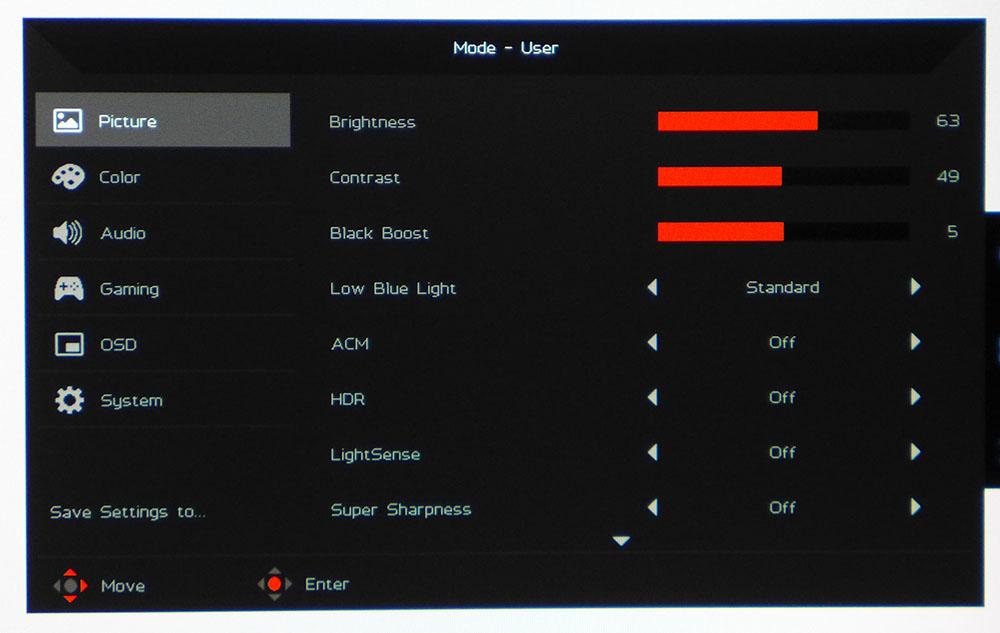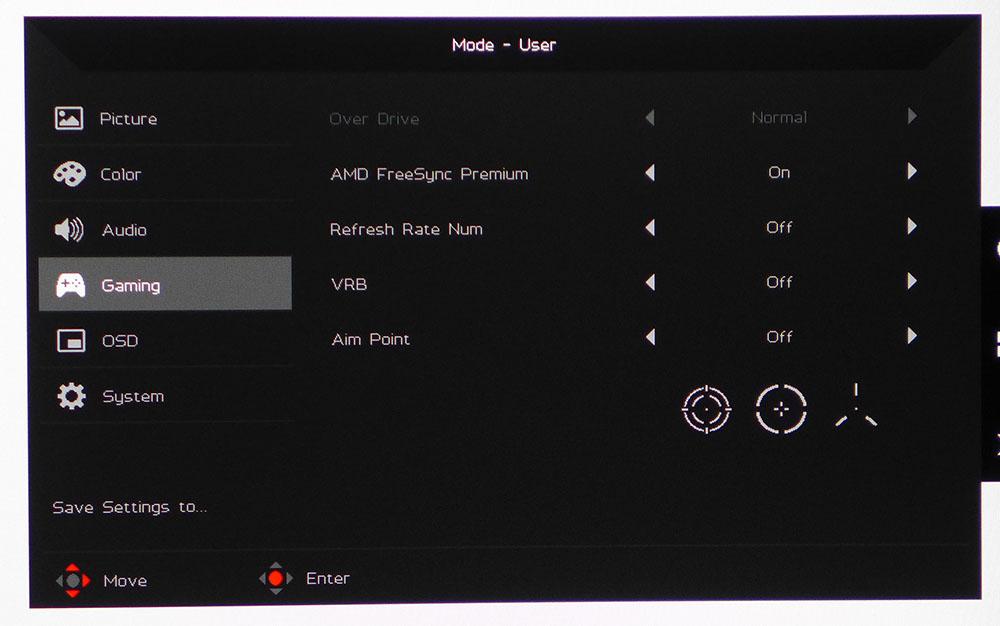Tom's Hardware Verdict
The Acer Nitro XV282K is great for gamers looking for the sharpest possible image, thanks to its high pixel density. It runs at the maximum refresh rate for the 4K class and delivers flawless Adaptive-Sync. Though the monitor’s contrast is only average, it delivers vibrant color and a solid gaming experience.
Pros
- +
+ Vibrant and accurate color
- +
+ Razor-sharp image
- +
+ Excellent overdrive, video processing
- +
+ All the gaming features of premium screens
Cons
- -
Just average contrast
- -
Light gamma
- -
Extra gamut modes can’t be calibrated
Why you can trust Tom's Hardware
We’ve looked at several 27-inch 4K gaming monitors that can hit 144 Hz, but the 28-inch category is something we haven’t explored in a while. Acer’s newest Nitro series member, the XV282K, packs 4K and 144 Hz along with Adaptive-Sync, HDR and extended color, into a responsive IPS panel with the latest connectivity and a $900 price of entry.
When considering price, performance and pixel density in a gaming monitor, there can be more than one sweet spot. With 1080p resolution screens hitting 360 Hz, players looking for the highest possible speed must sacrifice resolution. Or you can find a balance at 240 Hz with a 1440p panel. But if 4K is at the top of your priority list, 144 Hz is as fast as you can go right now, even with the best 4K gaming monitor.
Acer Nitro XV282K Specs
| Panel Type / Backlight | IPS / W-LED, edge array |
| Screen Size / Aspect Ratio | 28 inches / 16:9 |
| Max Resolution & Refresh Rate | 3840 x 2160 @ 144 Hz |
| Row 3 - Cell 0 | FreeSync: 48-144 Hz |
| Native Color Depth & Gamut | 10-bit (8-bit+FRC) / DCI-P3 |
| Row 5 - Cell 0 | HDR10, DisplayHDR 400 |
| Response Time (GTG) | 3ms |
| Brightness (mfr) | SDR: 320 nits |
| Row 8 - Cell 0 | HDR: 400 nits |
| Contrast (mfr) | 1,000:1 |
| Speakers | 2x 2w |
| Video Inputs | 1x DisplayPort 1.4 |
| Row 12 - Cell 0 | 2x HDMI 2.1 |
| Row 13 - Cell 0 | 1x USB-C |
| Audio | 3.5mm headphone output |
| USB 3.0 | 1x up, 4x down or None |
| Power Consumption | 40.2w, brightness @ 200 nits |
| Panel Dimensions WxHxD w/base | 25.1 x 18.4-23.4 x 10.6 inches (638 x 467-594 x 269mm) |
| Panel Thickness | 2.7 inches (68mm) |
| Bezel Width | Top/sides: 0.3 inch (8mm) |
| Row 20 - Cell 0 | Bottom: 0.8 inch (19mm) |
| Weight | 17.1 pounds (7.8kg) |
| Warranty | 3 years |
When we first saw 28-inch 4K monitors, they were TN panels limited to 60 Hz. Thankfully, progress has been made with IPS technology to bring us that same 157 pixel per inch (ppi) density with an honest 144 Hz refresh rate achieved without overclock. The XV282K also adds extended color, HDR and Adaptive-Sync to the mix. Beyond DCI-P3, other gamut modes included Rec.709, SMPTE-C and EBU if you need accurate reference points for those smaller color spaces.
The XV282K accepts HDR10 signals over DisplayPort 1.4 with Display Stream Compression (DSC) at up to 144 Hz and over HDMI 2.1 with a limit of 120 Hz. The monitor is AMD FreeSync-certified, and while it’s not G-Sync-certified by Nvidia, we got G-Sync to work (see our tutorial on how to run G-Sync on a FreeSync monitor). Adaptive-Sync worked with HDR, also up to 144 Hz. You can also send 10-bit signals, and the monitor will use Frame Rate Conversion (FRC) to process them. Though the native color depth is 8-bit, we never saw any banding artifacts in either test patterns or actual content.
The XV282K uses an edge array backlight to peak at around 300 nits in SDR mode and just over 400 nits for HDR content. Our tests showed some extra contrast in HDR games like Doom Eternal, but we would not categorize this monitor as an HDR powerhouse. It does show a colorful image though. Acer includes a calibration test data sheet with each monitor, and our review unit measured well out of the box and calibrated to a good standard.
Assembly and Accessories
The XV282K’s base, upright and panel are assembled without tools to form a solid package. The cable bundle features HDMI, DisplayPort and USB-C. A thin brick-shaped power supply is also in the box.
Product 360

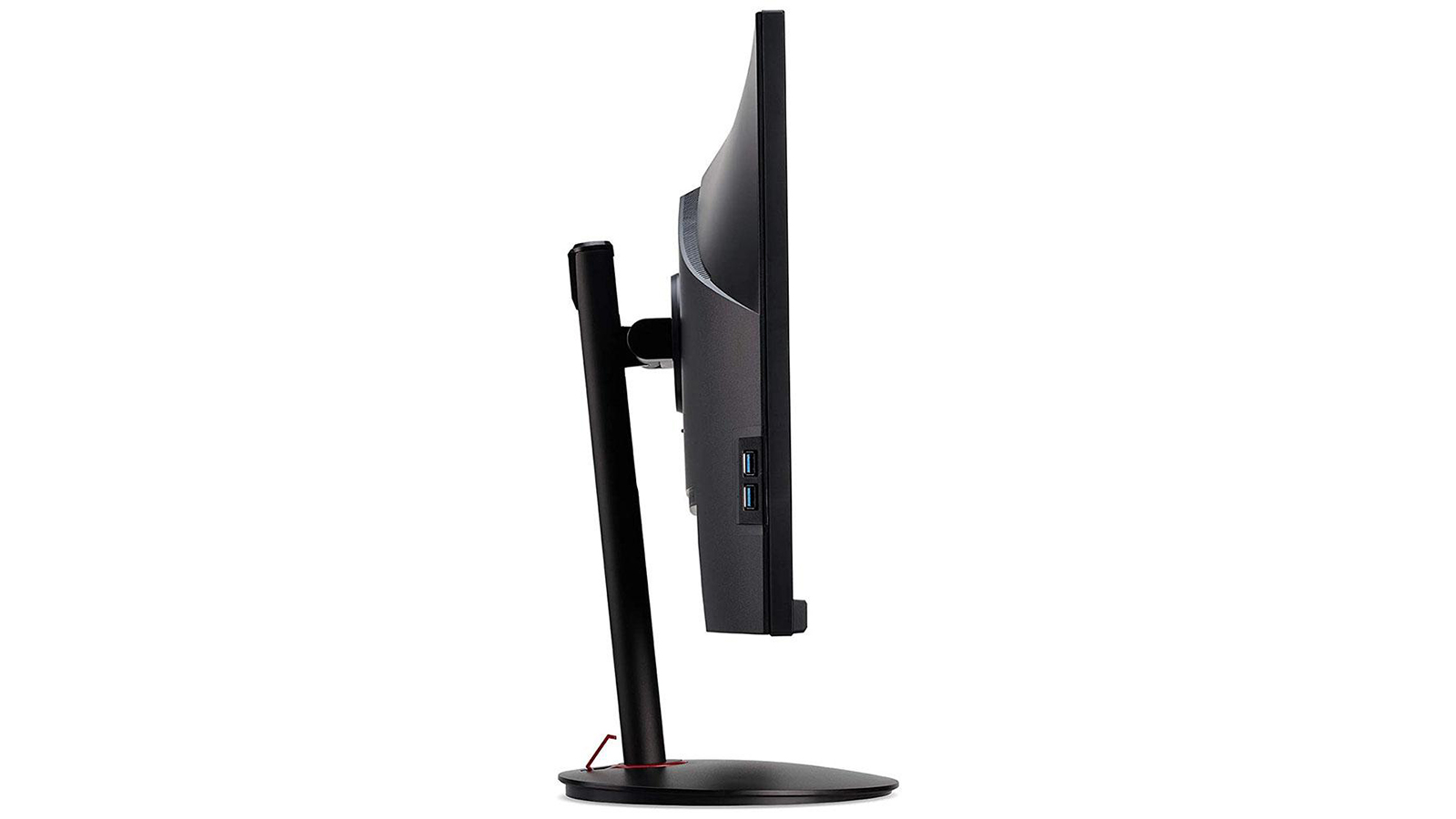
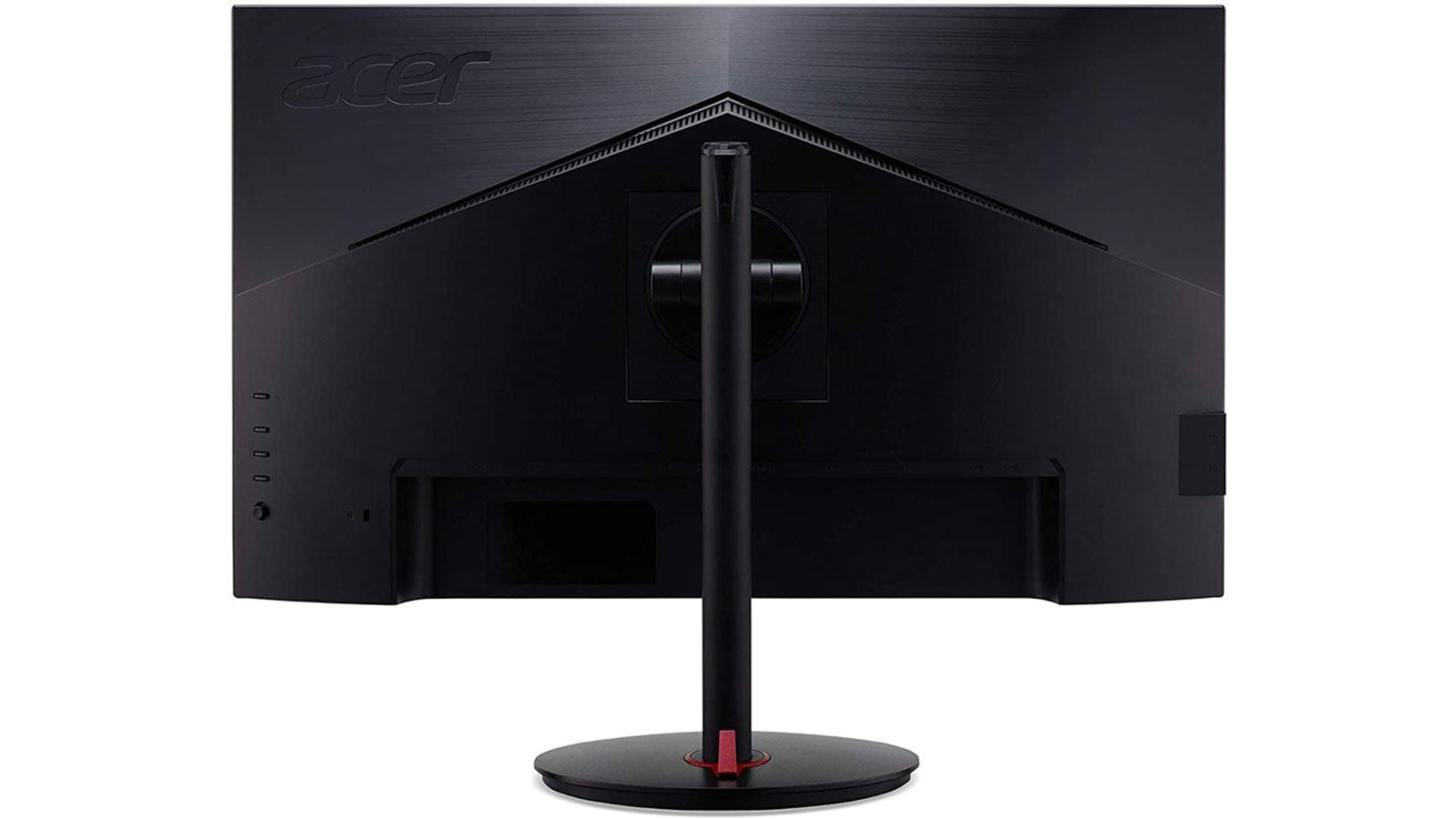
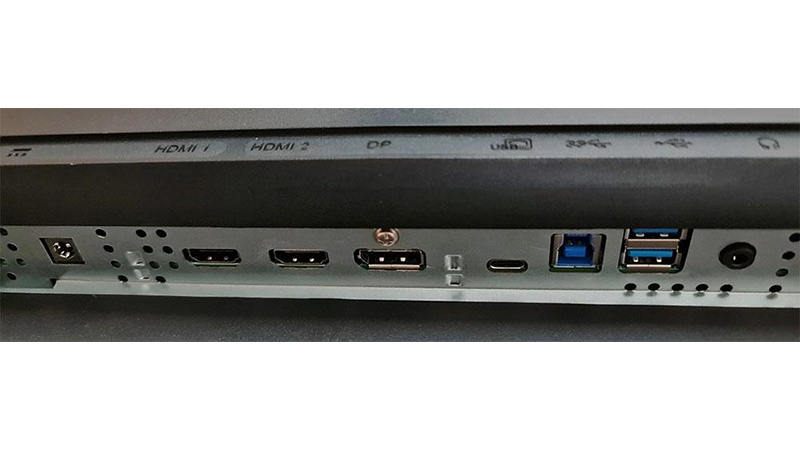
The XV282K is definitely in the sleeper styling category. From the front, you’d think you’re looking at an enterprise screen. A thin flush bezel of 8mm frames the top and sides, while a wider 19mm strip crosses the bottom. In the center is a small sensor for room light and user proximity. When activated, there are features that alter image brightness and color temperature to fit the environment. And the monitor can remind you when to take a break if it senses your continued presence.
Get Tom's Hardware's best news and in-depth reviews, straight to your inbox.
Aside from the small Acer logo, the only other visible accent in front is a bright blue LED. Reaching up behind it reveals a power toggle, three control keys and the OSD joystick. The left side includes something that’s becoming increasingly rare these days: USB ports. More and more monitors either have them just in the input panel or leave them out altogether. We applaud any monitor that puts them on the side, where they’re easily accessible.
The input panel is well stocked with a 3.5mm headphone audio jack, two HDMI 2.1 ports, a single DisplayPort 1.4, USB-C, which can support peripherals and act as a DisplayPort Alt Mode input, as well as an upstream USB-B and two more downstream connections for a total of four. The base also features a small hook to help tidy up wiring.
The stand is slender in appearance but beefy underneath. The upright is a metal tube with a smooth height adjustment of 5 inches. The heavy base turns to provide unlimited swivel in either direction. You’re only stopped by the wires. Tilt is 5 degrees forward and 35 degrees back, and there’s a 90-degree portrait mode. Movements are firm and free of play with a premium feel.
OSD Features
Pressing the XV282K’s joystick pops up a small menu that includes input selection, picture modes and a brightness slider. A second press opens the full on-screen display (OSD) menu, which has just about everything a tweaker could want.
The Picture menu has several enhancements, including ACM (dynamic contrast), HDR modes, and Super Sharpness, which adds edge enhancement. You can also boost black levels to make shadow detail more visible and engage a Low Blue Light mode for easier reading. The XV282K earns a TUV Rheinland Eyesafe certification thanks to this. Also in this menu is LightSense, which adjusts brightness automatically when room light shifts.
The XV282K does not automatically engage its HDR mode when an HDR signal is detected, you have to switch over manually. There are two modes available, Auto and HDR 400. The latter is a bit brighter and has subtly better black levels. For SDR signals, there are seven picture modes that correspond to different tasks or game types. Making any change puts the monitor in User mode, where all controls are available.
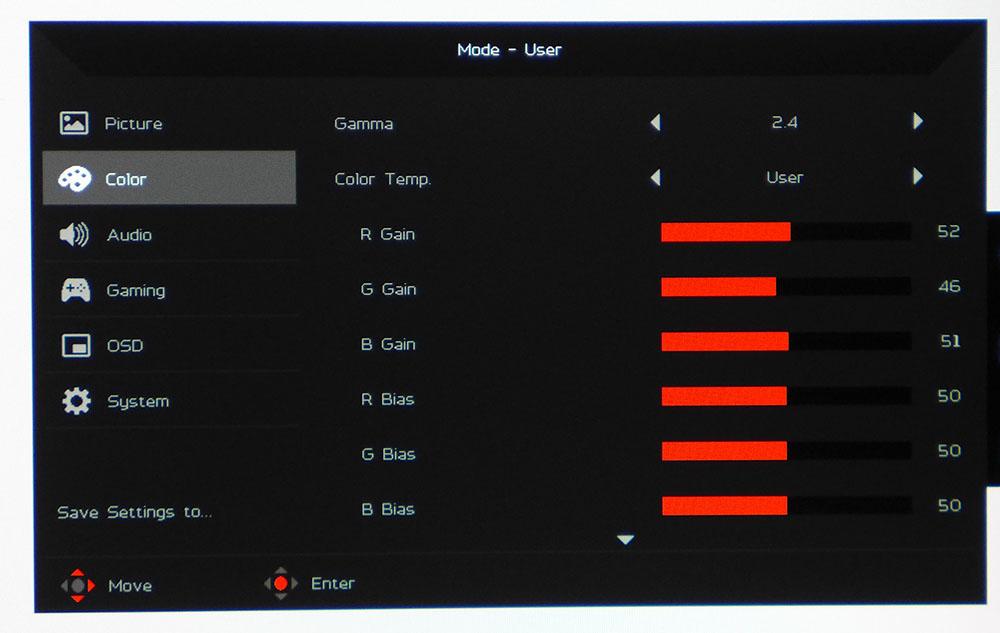
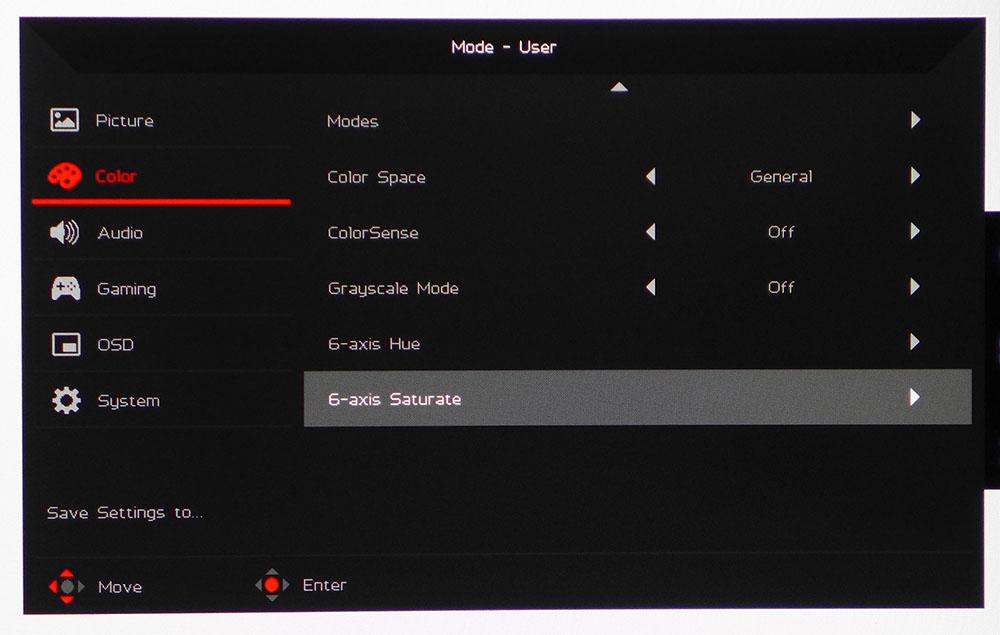
The XV282K has an impressive suite of calibration options with gamma presets, color temps, two-point white balance sliders and color management. You can also select different color gamuts although these modes are fixed and only allow brightness adjustments. If you want to use Rec.709 color for SDR games and content, the option is there. Color Sense adjusts the white point using the bezel sensor to tailor the picture for different room lighting conditions.
The Gaming menu has a well-implemented, two-level overdrive. Though the option is grayed out when FreeSync is on, it is working to reduce motion blur. We verified its operation using various tests found on Blurbusters.com. If you’d rather use the backlight strobe, turn on VRB. It takes out Adaptive-Sync but effectively smooths out moving images up to 144 Hz. We liked its overall look but saw some frame tears. This menu also offers a frame rate indicator and a selection of aiming points.
When you’ve configured the XV282K to your satisfaction, you can save settings to one of three memories for quick and easy recall.
Acer Nitro XV282K Calibration Settings
The XV282K’s default Standard picture mode delivers reasonably good accuracy, but there are gains available from calibration. Making any change switches the monitor to its User mode, but you can save settings to any of the three gaming picture modes (Action, Racing or Sports). After our initial measurements, we adjusted the RGB gains and changed the gamma preset to 2.4. Default gamma looked a little light, but our change improved perceived contrast and made the image pop more with darker shadow areas.
Below are our SDR recommended calibration settings for the Acer Nitro XV282K.
| Picture Mode | User |
| Brightness 200 nits | 63 |
| Brightness 120 nits | 33 |
| Brightness 100 nits | 25 |
| Brightness 80 nits | 18 |
| Brightness 50 nits | 7 (min. 30 nits) |
| Contrast | 49 |
| Gamma | 2.4 |
| Color Temp User | Gain – Red 52, Green 46, Blue 51 |
| Row 9 - Cell 0 | Bias – Red 50, Green 50, Blue 50 |
Aside from the two additional presets, there are no image controls available for HDR content.
Gaming and Hands-on
For general workday tasks and entertainment, the XV282K is a capable monitor. With nicely balanced and saturated color, it delivered a sharp and punchy image whether looking at static graphics or video. Its pixel density is a definite factor when comparing it to larger screens. Since 3840 x 2160 is the current limit of consumer displays, one should consider screen size. Though many are going to 43-inch and larger monitors, a 27 or 28-inch panel has a much tighter pixel structure, and you can easily see the difference in clarity.
Contrast was sufficient to make small fonts easily readable against white backgrounds. We couldn’t see any jaggies, even when viewing closer than normal. Though we consider the 109ppi of a 27-inch 1440p screen to be a great balance between sharpness and speed, the XV282K’s 157ppi is visibly sharper.
In our calibrated mode, we used the monitor’s full native gamut for all content. Though it is almost 83% of DCI-P3 and 123% of sRGB, it worked fine for SDR content. It isn’t strictly accurate, but if you aren’t concerned about absolute adherence to standards, it’s a great way to work and play.
We also engaged the Rec.709 mode for some of our work sessions and it proved accurate as well but doesn’t allow calibration. Fortunately, you can adjust brightness, and the color temp is close to D65 on the Warm setting.
Tomb Raider in SDR looked super sharp and saturated on the XV282K. Contrast was solid with bright highlights and reasonably deep shadows. Scenes with moderate to bright lighting looked the best. The darker material was a bit gray. You won’t see true blacks from this monitor, but its gamma is accurate enough to render all the intended detail.
Image depth looked better in HDR games, like Doom Eternal and Call of Duty: WWII. Though the XV282K isn’t an HDR powerhouse, it does a respectable job with well-mastered content. We were most captivated by the extra detail afforded by high pixel density and the occasional bright reflection from a vehicle’s headlights had a bit more impact than its SDR counterpart. And color was always vibrant.
Video processing was competent and reliable with FreeSync and unofficial G-Sync working equally well on our two test PCs. The XV282K managed just over 120 frames per second (fps) in Doom Eternal when playing with a GeForce RTX 3090. Call of Duty: WWII was able to peg the frame count at 144 fps in most instances. Though the overdrive option was grayed out, it was obviously working because motion resolution stayed high no matter how fast we moved the mouse. Input lag was perceptibly non-existent as well. Though this monitor isn’t as fast as a 240 or 360 Hz screen, most won’t be able to tell a difference in control feel.
Built-in speakers run on 2W of power apiece and are tinny sounding but free of distortion. If you want better audio, plug headphones or powered speakers into the 3.5mm audio jack.
MORE: Best Gaming Monitors
MORE: How We Test PC Monitors
MORE: How to Buy a PC Monitor: A 2021 Guide
Current page: Features and Specifications
Next Page Response, Input Lag, Viewing Angles and Uniformity
Christian Eberle is a Contributing Editor for Tom's Hardware US. He's a veteran reviewer of A/V equipment, specializing in monitors. Christian began his obsession with tech when he built his first PC in 1991, a 286 running DOS 3.0 at a blazing 12MHz. In 2006, he undertook training from the Imaging Science Foundation in video calibration and testing and thus started a passion for precise imaging that persists to this day. He is also a professional musician with a degree from the New England Conservatory as a classical bassoonist which he used to good effect as a performer with the West Point Army Band from 1987 to 2013. He enjoys watching movies and listening to high-end audio in his custom-built home theater and can be seen riding trails near his home on a race-ready ICE VTX recumbent trike. Christian enjoys the endless summer in Florida where he lives with his wife and Chihuahua and plays with orchestras around the state.
-
Joseph_138 Holy crap, that price! This is obviously not a monitor for the masses. Just having a PC that can run games at 4k144 is going to cost you many thousands of dollars. This is a rich kids toy.Reply -
zodiacfml at $900, definitely a price improvement vs getting a 4K120 OLED TV. Still a long way to goReply -
wifiburger all these 4k high refresh panels are worthless at these price points.Reply
In no way I'm paying 4x the cost vs a good 4k 60hz panel !
I think I'll step down to 1440p panel in the future if I need high refresh rate.
